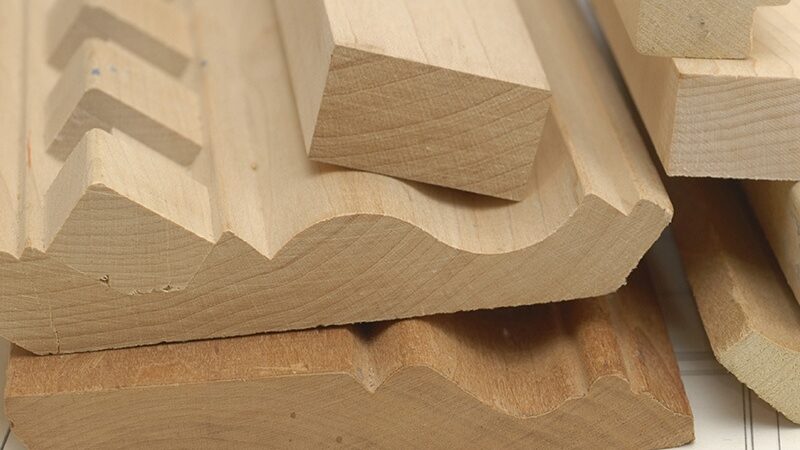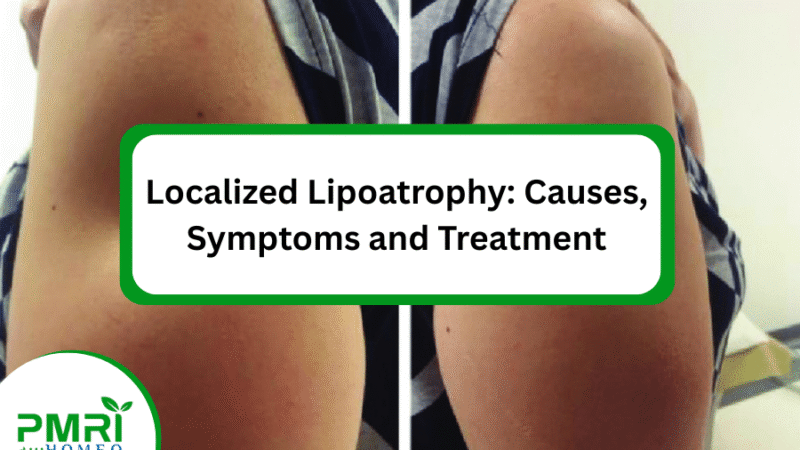Why Coalescing Plate Oil Water Separators Are Ideal for Industrial Use

Have you ever wondered how businesses keep oily wastewater under control? Are you curious about the technology that allows industrial sites to maintain environmental standards without breaking the bank? If so, you’re in for a treat. This blog post will walk you through the ins and outs of coalescing plate oil water separators, explaining why they’re the go-to choice in many Australian industries.
Before we get stuck into the details, let’s look at the bigger picture. Industrial processes often produce waste streams that mix oil with water. Tackling this challenge is crucial for protecting both the environment and the efficiency of a workplace. By understanding the function and benefits of a reliable oil water coalescer, you’ll be better prepared to invest in a system that suits your business.
Across these sections, we’ll explore what a coalescer oil water separator actually is, how it works, and the reasons it’s so popular in diverse sectors—from mining to food processing. We’ll also talk about cost-effectiveness, legal obligations, and key maintenance strategies. By the end, you’ll know exactly why coalescing plate oil water separators stand out and how they can level up your operations.
Understanding Coalescing Plate Oil Water Separators
Coalescer Oil Water Separator
A coalescer oil water separator is a device designed to remove oil droplets from water. It typically uses a series of plates (often referred to as an oil separator plate) arranged in parallel. When oily water flows through these plates, the small oil droplets merge or coalesce into bigger ones, making them easier to separate from the water stream. Because the droplets grow larger, the oil floats more readily to the surface, leaving cleaner water behind.
You might come across variations in design, but the principle stays the same: creating a space where oil molecules can attach to each other and rise to the top. In many industrial operations, including automotive workshops and manufacturing plants, coalescer oil water separators are essential for keeping discharge water within regulated limits. Essentially, they do the heavy lifting of separating oil from water, so your site can comply with strict environmental guidelines.
The Role of the Oil Separator Plate
The oil separator plate is a crucial component. These plates are often corrugated or textured so that when water and oil pass through, tiny oil droplets cling to the plate surfaces. Over time, those droplets unite and form larger globules, which eventually detach from the plates and float upwards. This design speeds up the separation process, helping to reduce the space and time required to achieve compliant water quality.
Some brands take the concept to slightly different levels, but all follow the same basic approach: direct flow through plate packs that encourage oil droplets to bond. Without this component, you’d rely on simple gravity separation a method that’s slower and less effective.
Oil Water Separators Essential for Industrial Sites
Industrial facilities often deal with large volumes of wastewater. If oil isn’t removed efficiently, you risk contaminating local ecosystems, racking up hefty fines, and even damaging your equipment. By installing an oil water coalescer, your site can meet environmental regulations, protect plant machinery, and improve overall productivity.
What’s more, in Australia, local authorities require industrial sites to treat their wastewater before discharging it into drains or waterways. So, beyond the practical benefits, there’s a regulatory imperative. Coalescing plate oil water separators are designed with these regulations in mind, making them a dependable choice for peace of mind.
Coalescing Plate Oil Water Separators Work
The Science Behind Coalescing
“Coalescing” might sound a bit technical, but it simply means the merging of two or more particles into one. In this context, the particles are oil droplets. Imagine tiny spheres bobbing around in water. When they come into contact with one another—or with the oil separator plate—they bond, forming a bigger droplet. In industrial processes, these bigger droplets float to the surface much more quickly than tiny ones would on their own.
In a typical coalescing plate oil water separator, flow velocity is carefully controlled. Oil droplets travel at a speed that maximises collision chances. The moment collisions occur, particles merge, making it even easier to skim off the top. This process helps achieve cleaner water without having to add chemicals or use mechanical parts that might break down.
Key Components in an Oil Water Coalescer
A standard oil water coalescer features:
- An inlet section where oily water enters the unit
- A set of coalescing plates arranged in a compact formation
- A settling region where separated oil gathers at the surface
- An outlet for the treated water, which is typically discharged to drains or retained for further processing
These components work together to keep the process smooth and consistent. Alongside the plates, many separators have a sludge chamber to catch heavier debris, preventing blockages. Some advanced systems may also include oil skimmers or alarms that alert when it’s time to drain collected oil.
Benefits of Coalescing Plate Oil Water Separators for Industrial Use
Enhanced Efficiency and Performance
The main selling point of a coalescer oil water separator is its efficiency. Thanks to the special plates, you can achieve a higher removal rate for oil, even if it’s in very fine droplets. Plus, you’ll typically need less space than older gravity separators, saving valuable real estate on your site. This compact design also makes it easier to integrate with existing wastewater treatment infrastructure.
Efficiency isn’t just about space, though. It’s also about how quickly the system can process each batch of oily water. Because the flow is optimised for collision and droplet amalgamation, you can treat a large volume of wastewater faster, which often equates to lower operational costs.
Environmental Compliance and Australian Regulations
In Australia, environmental standards for discharge water can be stringent. Local legislation aims to protect waterways and aquatic life, which places strict obligations on businesses that generate oily wastewater. By installing an oil water coalescer, you’ll tick the necessary compliance boxes and avoid potential penalties. Keeping your water discharge within legal benchmarks also helps maintain a positive brand image.
Moreover, many local councils and agencies perform regular checks and demand documentation of your site’s oil water separator system performance. Having a well-maintained coalescing plate oil water separator makes it easier to prove compliance and keep inspectors happy. In turn, this reduces stress and protects your business reputation.
Cost-Effectiveness and Ease of Maintenance
Coalescing plate separators often have fewer moving parts than mechanical systems. This means there’s less to maintain and fewer spare parts to order. Plus, the overall operating costs can be lower because the separator uses gravity and plate interactions rather than pumps or propellers.
Maintenance typically involves periodic cleaning of the plates and the removal of accumulated oil. Thanks to the structured design, these tasks are straightforward. Over time, this simplicity translates into cost savings on labour and potential downtime. Companies looking to optimise their budget usually find that coalescing plate systems offer a fantastic balance of performance and affordability.
Comparison of Different Oil Water Separator Systems
Conventional Gravity Separators vs. Coalescing Systems
Conventional gravity separators rely only on the different densities of oil and water to encourage separation. Because oil is lighter than water, it eventually rises to the top. However, without the help of coalescing plates, smaller oil droplets can take a lot longer to form larger globules. This results in bigger tanks or slower flow rates to achieve the same separation outcome.
In contrast, coalescing plate systems speed up the collision process. Smaller droplets merge more easily, making the entire operation faster and more efficient. This means a coalescing design often needs less space to do the same job. In industries that can’t spare large footprints, coalescing systems are a brilliant solution.
Oil Coalescer Water Oil Separators vs. Mechanical Separators
Mechanical separators can incorporate spinning discs, filters, or aerators to help separate oil from water. While they can be effective for specific applications, they often require more upkeep and have more components that can wear out. A coalescer oil water separator uses a passive, gravity-based method with the help of plates, which generally requires less maintenance.
Additionally, mechanical systems sometimes need external power sources to operate, which pushes up energy costs. Over time, this can become burdensome. Coalescing units, on the other hand, mostly run with minimal power, making them a more cost-friendly choice in the long run.
Kwikflo Oil Separator: A Closer Look
You might have come across terms like “kwikflo oil separator.” Kwikflo is a brand that offers packaged systems for oil water separation. Their designs often incorporate coalescing plates and can be installed in a relatively compact area. The key advantage is that they arrive ready to go, reducing installation hassles and downtime.
Much like other coalescing plate solutions, Kwikflo oil separators aim to remove oil quickly and efficiently. If you’re searching for a brand known for straightforward installation and reputable performance, it’s worth considering. Still, it’s always good to compare specs and consult professionals so you choose the best model for your particular needs.

Real-World Applications and Examples in Australia
Mining and Resources
Mining operations generate wastewater containing oil, grease, and other contaminants. Without proper treatment, the discharge can harm local ecosystems. Coalescing plate oil water separators make an ideal match for the mining sector, thanks to their robust construction and low maintenance requirements. By using a reliable oil water separator system, mining sites can keep effluent levels within Australian guidelines and avoid hefty fines.
The reduced requirement for external power also makes these systems particularly suitable for remote mining locations, where electricity can be limited. Regularly removing accumulated oil and cleaning the coalescing plates ensures continued compliance and fewer operational hiccups.
Manufacturing and Food Processing
Manufacturing facilities, especially those that involve metalworking or machinery, often deal with oily washdown water. Food processing plants, on the other hand, contend with various organic substances, but cooking oils can still pose a more typical challenge. In both cases, coalescer oil water separators are often installed to keep effluent manageable.
Because coalescing plate technology tackles oil droplets swiftly, manufacturers can continue operations without worrying about blocked drains or suspicious odours. Moreover, by maintaining clean discharge, companies demonstrate their commitment to environmental responsibility—a factor that increasingly appeals to customers and local communities.
Transport and Logistics
Think of truck depots, bus stations, or even warehouse facilities that handle freight. All these places can produce oily runoff from vehicle cleaning and maintenance. Installing an oil coalescer water oil separator ensures that runoff doesn’t pollute surrounding land or waterways. It also helps to protect onsite drains and reduce the risk of flooding.
Many logistics hubs in Australia already rely on coalescing systems to keep up with state or council regulations. The next time you’re in a large transport yard, you might spot an underground or aboveground tank that’s responsible for treating the water before releasing it. These systems often have built-in alarms so staff can quickly check oil levels and schedule servicing.
Selecting and Installing a Coalescing Plate Oil Water Separator
Key Factors to Consider (Flow Rate, Capacity, Maintenance)
Before you invest in an oil water separator system, it’s important to think about the flow rate of your wastewater. This determines the separator’s size and design. If your operations generate massive amounts of oily water, you’ll need a unit with a larger capacity. Additionally, look at your fluid’s composition—does it contain solids or chemicals that could affect the coalescing plates?
Ease of maintenance should also be top of mind. Even if a separator has superior performance, it won’t do much good if it’s too difficult to keep clean. Opting for a brand or model with removable plates can simplify the cleaning process. Finally, consider how much space you have for the installation and whether or not you might need pre-treatment for coarse debris.
Working with Industry Professionals and Consultants
Making sure you pick the right coalescing plate oil water separator is a team effort. Industry consultants, engineers, and equipment suppliers can help you assess your needs and match you with a suitable unit. They’ll also advise on any pre-treatment steps or modifications to existing drainage systems.
Professional expertise can be especially valuable if you’re dealing with complex wastewater streams. Consultants might conduct onsite tests, examine your daily volume, and advise you on the best layout. This approach can save money in the long run by preventing incorrect purchases or re-installations.
Best Practices for Maintenance and Servicing
Routine Inspections and Cleaning Schedules
A coalescing plate oil water separator isn’t a “set and forget” device. Regular inspections are key to keeping performance levels high. This normally includes checking for excess sludge in the bottom chamber, monitoring oil accumulation at the surface, and making sure the plates aren’t clogged with debris.
A typical schedule might involve monthly inspections and quarterly cleaning, though some industries might require more frequent attention. Overlooking maintenance can lead to lower separation efficiency, higher discharge levels of oil, and increased risk of environmental citations. By staying on top of this routine, you ensure that your system runs smoothly for years to come.
Replacing and Upgrading the Oil Separator Plate
Over time, even the best oil separator plate can wear down or become damaged. If you notice a dip in efficiency or a more frequent need for cleaning, it might be time to replace the plates. Some modern designs allow for modular plate packs, so you can swap out only the parts that need changing rather than the entire unit.
Upgrades might also be warranted if your business expands. A system that was adequate five years ago might not handle current volumes. Fortunately, many coalescing separators are scalable. You can add more plates or upgrade to a bigger unit without having to start from scratch.
Solving Common Pain Points
Ensuring Compliance and Avoiding Fines
Many facility managers worry about meeting environmental regulations. With a properly maintained coalescer oil water separator, you can stay on the right side of the law. Australia’s strict guidelines mean you must keep an eye on your discharge quality. A robust maintenance schedule and accurate record-keeping will make life easier when facing audits or inspections. Work with consultants to confirm you’re using the right system for your type of waste, and always follow local requirements.
Reducing Operational Costs and Downtime
Another major concern is cost. Nobody wants to shell out more than necessary for wastewater treatment. Fortunately, a well-chosen coalescing system can be surprisingly cost-effective. The technology is largely gravity-based, so it doesn’t guzzle energy. Maintenance, while required, tends to be straightforward. This keeps labour and parts expenses at a manageable level.
Downtime is another pain point. Equipment failures can bring daily operations to a halt, costing you time and money. Coalescing plate oil water separators help mitigate this risk, as they usually have fewer mechanical parts to break down. By adhering to best practices, you minimise disruptions and keep productivity high.
Conclusion
Summing up, coalescing plate oil water separators excel at managing oily wastewater across a broad range of Australian industries. They’re compact, efficient, and relatively simple to maintain. By speeding up the coagulation of oil droplets, these systems produce cleaner effluent without demanding massive amounts of space or energy. For industries under strict environmental regulations or those keen to keep operational costs manageable an oil water coalescer stands out as a top choice.
But the real impact goes beyond just separating oil from water. Investing in a coalescing system demonstrates your commitment to safeguarding the environment and adhering to local laws. Plus, it can protect your equipment, your site’s reputation, and even your bottom line. Whether you run a sprawling mining operation or a small manufacturing unit, choosing the right oil water separator system can be a game-changer.
Ultimately, if you’re looking for a smarter way to handle industrial wastewater, it’s worth investigating coalescing plate oil water separators. By taking the time to select and maintain a suitable design, you’ll unlock an efficient, cost-effective approach to oil-water separation that keeps your business on track and in good standing with regulators.



